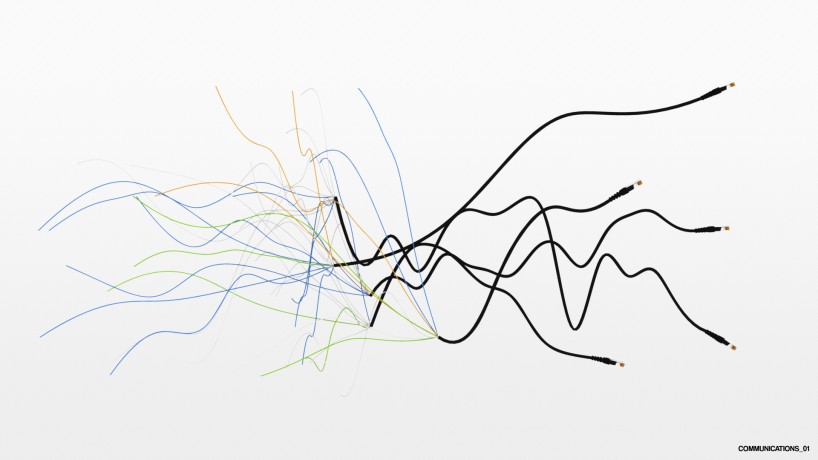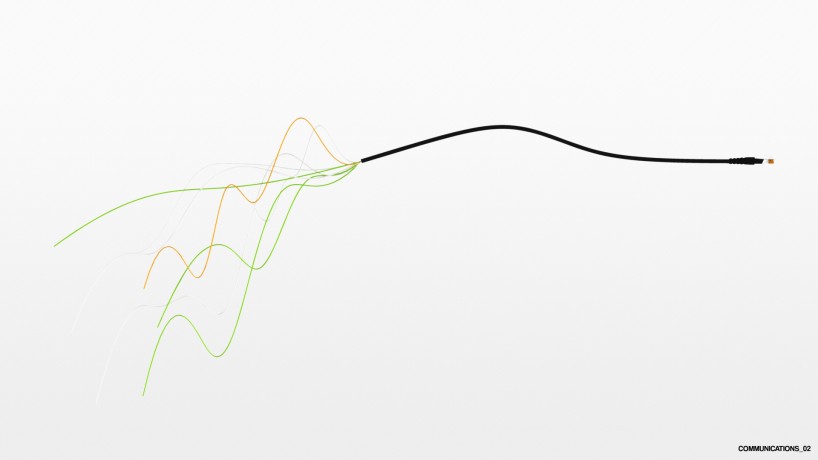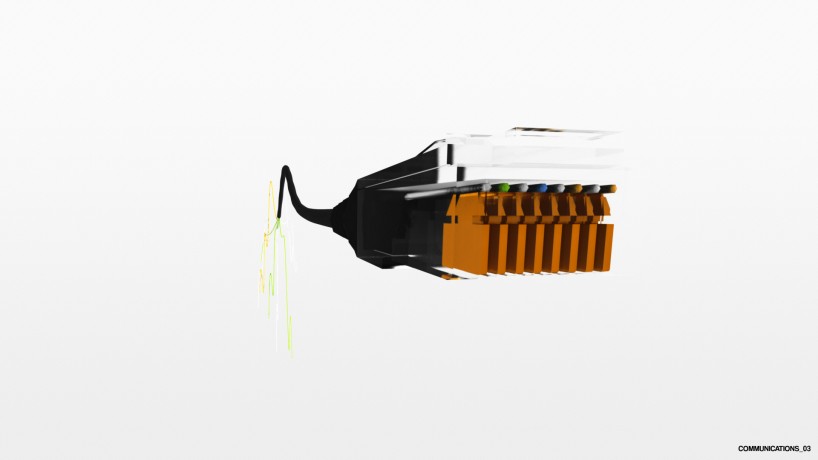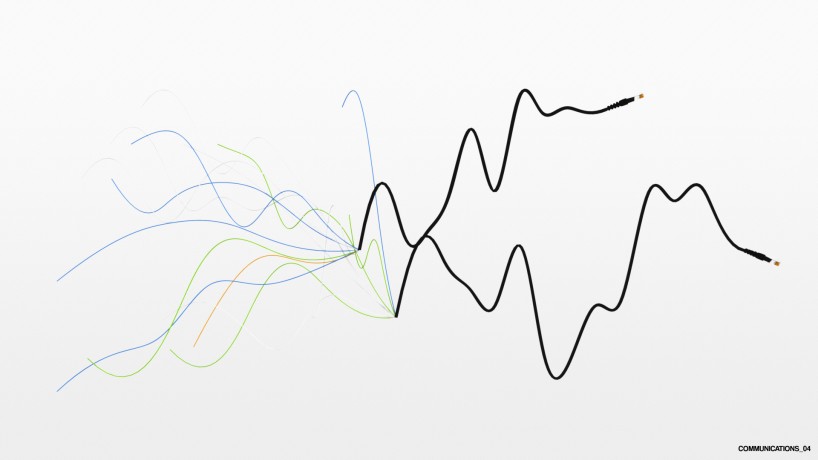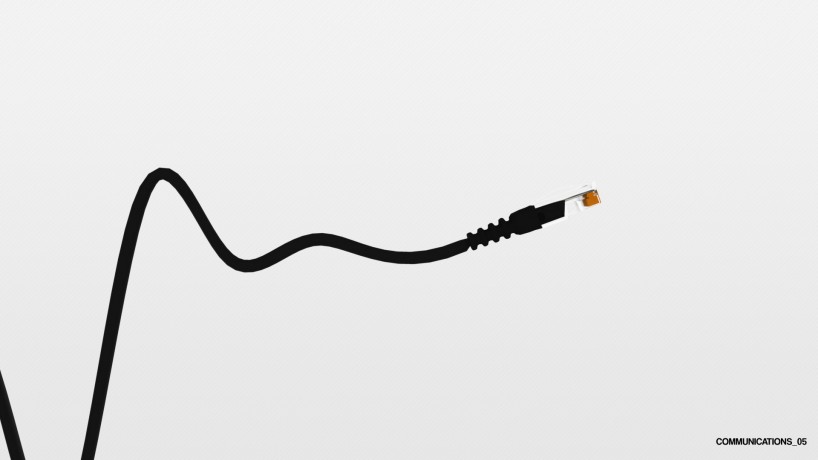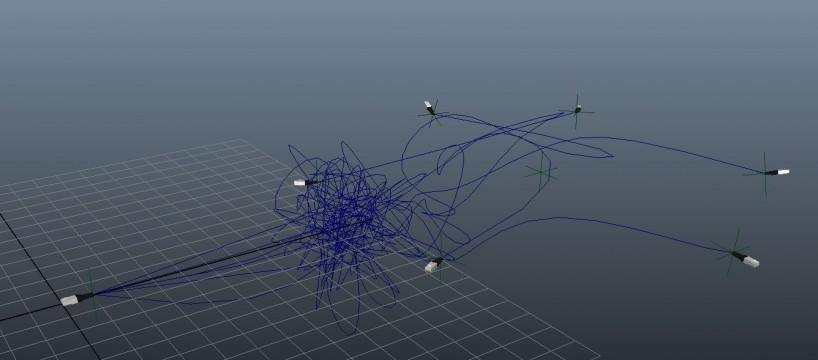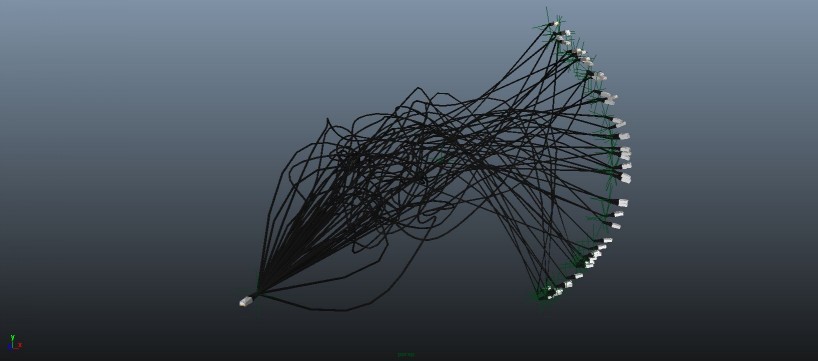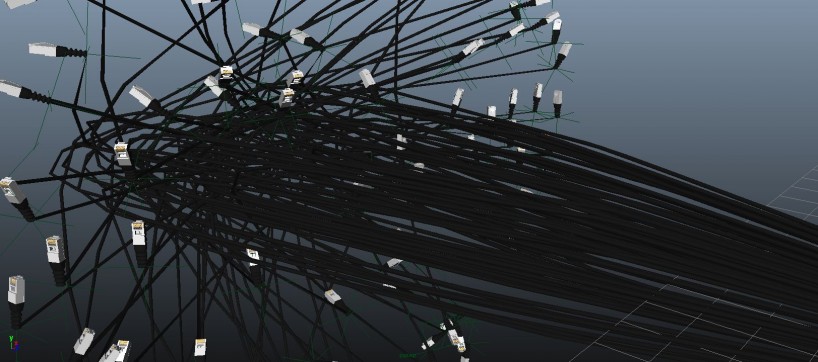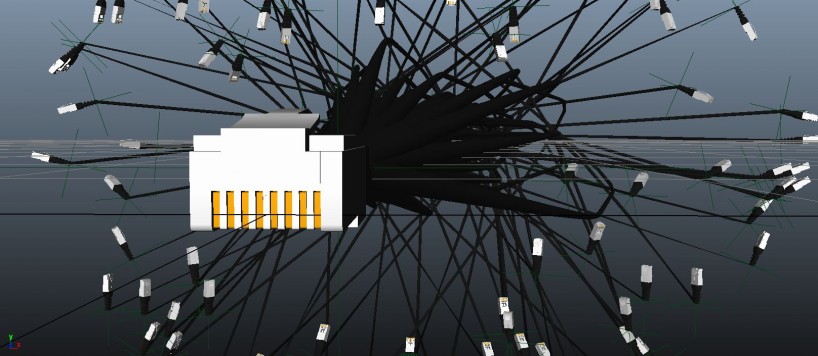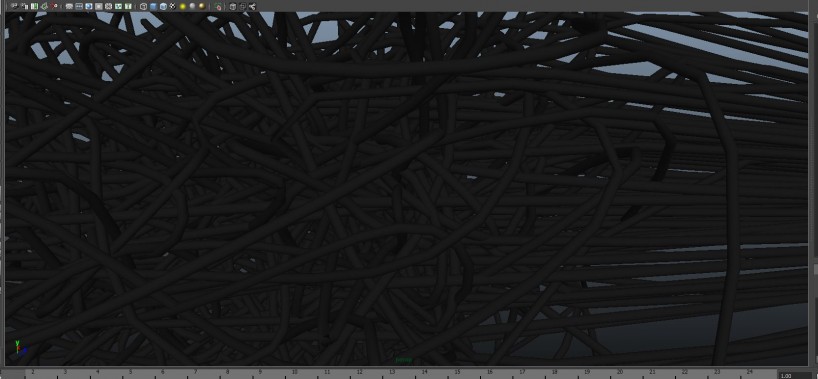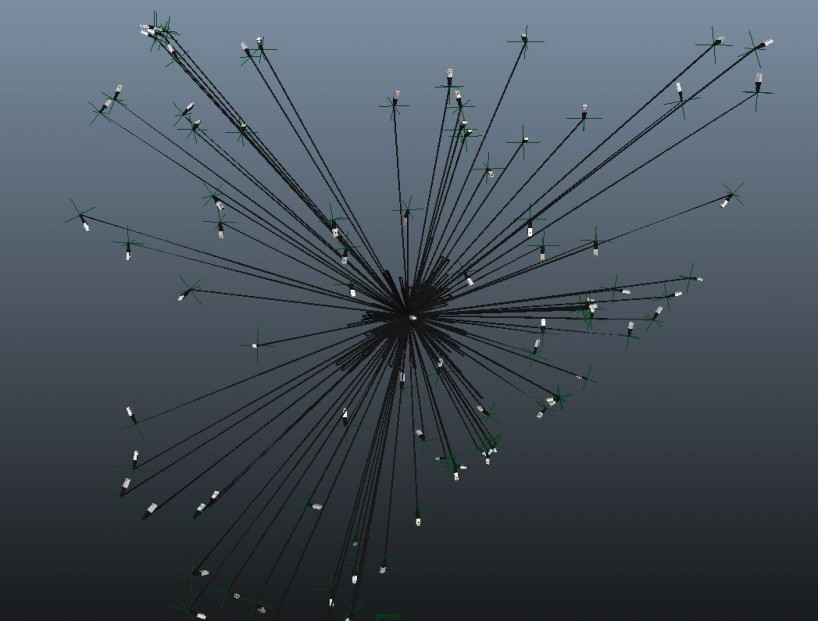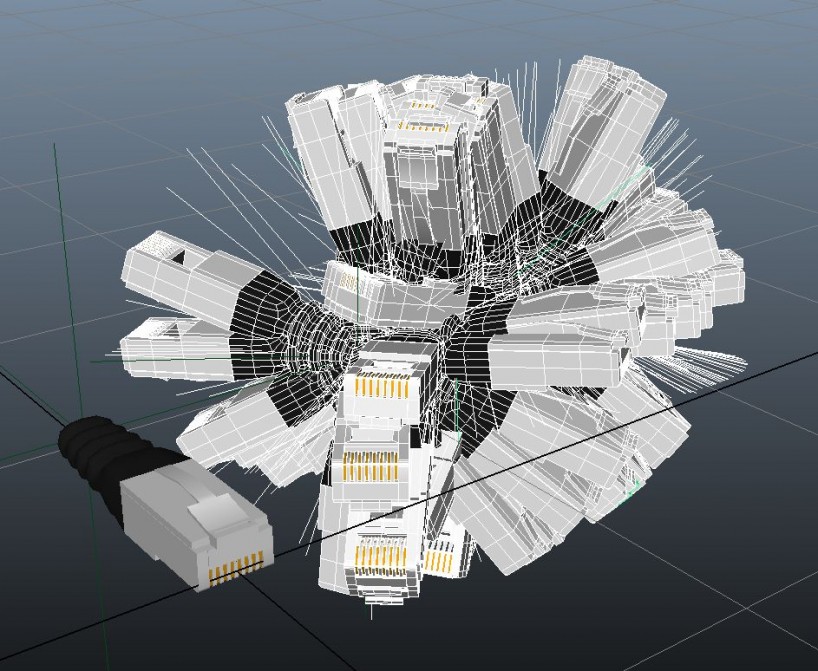Internet - Generative 3D with Maya and Python
2 Oct, 2011
MDDN311 Project 2: Genesis
For this project you will create a form using generative techniques in Maya with Python scripts.
Results
Development images
My initial idea was to have one cable coming out of a sphere of cables with jacks pointing out, evenly distributed across the surface:
At some point, I changed direction and decided to render wireless/radio waves with the network cables I was already generating:
Finally, I removed one end of the cable and used my existing code to generate smaller cables coming from the end of each main cable:
The python script
The following Python script was written for Autodesk Maya 2011 to generate scenes like the ones at the top of this page. It requires the file JACK_FINAL.ma which contains the RJ45 plug model and materials that the script instances.
# "Internet" v5 by Stephen Holdaway
# Source models required: (RJ45 Jack w/ locator - JACK_FINAL.ma)
import maya.cmds as cmds
import math
import random
cableObject = "JACK_FINAL:cable_"
sourceObject = "JACK_FINAL:RJ45_Locator"
recursed = False
id = 0
def vAdd(l1,l2):
o = []
for i in range(3):
o.append(l1[i] + l2[i])
return o
def vSub(l1,l2):
o = []
for i in range(3):
o.append(l1[i] - l2[i])
return o
def vDiv(l1,v = 0.0):
o = []
for i in range(3):
o.append(l1[i] / float(v))
return o
def vMult(l1,v):
o = []
for i in range(3):
o.append(l1[i] * v)
return o
def vGen(mult=1, XZ = False):
o = []
for i in range(3):
o.append((random.random()-0.5)*mult)
if(XZ):
o[1] = 0;
return o
def drawCable(start, end, objects, radius, child):
# Draw Cable: create a curve with noise between two points and extrude a mesh using it
#
# start - start co-ords as [x,y,z]
# end - co-ords as [x,y,z]
# objects - list of object names as [start_object,end_object,cable_object]
# radius - radius of area of work in
# child - boolean: is this cable a child of another
cv = cmds.curve( p=(start), d=3)
if(child):
points = random.randint(4,radius)
amp = (random.random()*2)
else:
points = random.randint(4,radius*2)
amp = (random.random()*3)+1
vec = vDiv(vSub(start,end),points)
prevCV = start
for i in range(points-1):
p = vSub(start,vMult(vec,i+1))
p[1] += amp*math.sin(math.radians(i*(90*random.random())));
if(i==1):
rx = math.atan2(p[2] - start[2], p[1] - start[1]) * (180/math.pi)
cmds.setAttr(objects[0]+".rotateX", rx);
prevCV = p;
cmds.curve(cv, a=True, p=(p))
cmds.curve(cv, a=True, p=(end))
cmds.polyExtrudeEdge(objects[2]+".e[0:11]",kft=True, d=(points*10), inc=cv, sma=180, lrz=3600, ch=False)
cmds.select(cv,r=True)
cmds.delete()
global recursed
if(recursed == False):
recursed = True;
colours = ["JACK_FINAL:mia_material4SG1","JACK_FINAL:mia_material3SG1","JACK_FINAL:mia_material6SG1","JACK_FINAL:mia_material3SG1","JACK_FINAL:mia_material7SG1","JACK_FINAL:mia_material3SG1"]
for i in range(8):
rt = generateCables(1, radius, s = end)
cmds.select(rt)
cmds.sets(rt,fe=colours[random.randint(0,5)])
return objects[2]
def generateCables(count, radius, s = 0, shift = 0):
# Generate two points within a radius
#
# count - number of sets (wires) to generate
# radius - radius of area of work in
# s - start co-ords as [x,y,z]: when provided only one point is generated (relative to the given point)
for i in range(count):
points = [[],[]]
objects = ['','','']
child = False
for ii in range(2):
if(ii == 0 and s == 0):
cmds.select(sourceObject)
objects[ii] = cmds.instance()[0]
z = -radius + random.randint(round(-radius/4),round(radius/4))
else:
objects[ii] = cmds.spaceLocator()[0]
if(s == 0):
z = -random.randint(round(-radius/4),round(radius/4))
else:
z = (random.random() * radius)+1
r = 0
o = objects[ii]
if(ii == 0):
global id
cmds.select(cableObject)
cableStub = cmds.duplicate(n="Cable_"+str(id)+"_"+str(shift))[0]; id+=1;
objects[2] = cableStub
if(s != 0 ):
cmds.scale(0.3,0.3,0.3,r=True)
cmds.parent(cableStub,o)
r = 180
x = shift/2.0
y = random.randint(round(-radius/2),round(radius/2))
if(ii==0 and s != 0):
x = s[0]
y = s[1]
z = s[2]
if(ii==1 and s != 0):
x = s[0] + (random.random()-0.5)*2
z = s[2] + z
child = True
points[ii] = [x,y,z]
cmds.setAttr(o+".translateX", x)
cmds.setAttr(o+".translateY", y)
cmds.setAttr(o+".translateZ", z)
cmds.setAttr(o+".rotateY", r)
return drawCable(points[0], points[1], objects, radius, child)
for i in range(3):
recursed = False
generateCables(1,8,0,i);
This is a backdated post. The publish date reflects when the it would have been posted originally, however the actual publish date was later. This post was last modified 10 Oct, 2012.
